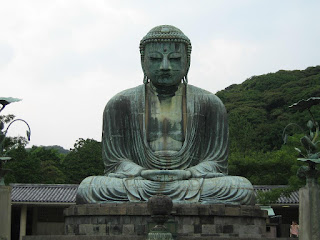 The tsunami following the earthquake in Chile has come and gone. Although many were quick to point out that the tsunami warnings were unnecessarily alarmist, it was impressive to see the authorities here reacting quickly; people were evacuated from places that were guaged at risk, tsunami sirens sounded and every television station had a superimposed map broadcast uninterupted accompanied by the estimated time a tsunami would arrive. There were some effects in Japan; several towns along the Iwate and Miyagi coast line in the north of Honshu flooded. The photo on the right, taken from the Japan Times, show flooding in a fishmarket, due to the tsunami. In some of the villages along the coast there, there are floodgates that are to be closed when tsunami threaten. (I have a photo that I will try to dig up and post here.)
The tsunami following the earthquake in Chile has come and gone. Although many were quick to point out that the tsunami warnings were unnecessarily alarmist, it was impressive to see the authorities here reacting quickly; people were evacuated from places that were guaged at risk, tsunami sirens sounded and every television station had a superimposed map broadcast uninterupted accompanied by the estimated time a tsunami would arrive. There were some effects in Japan; several towns along the Iwate and Miyagi coast line in the north of Honshu flooded. The photo on the right, taken from the Japan Times, show flooding in a fishmarket, due to the tsunami. In some of the villages along the coast there, there are floodgates that are to be closed when tsunami threaten. (I have a photo that I will try to dig up and post here.) Japan has an acute awareness of tsunami, evidenced by the fact the word meaning harbour wave, is Japanese in origin. The first time I went to the Pacific coast side of Chiba - east of Tokyo - I was struck by the distance between the shoreline and buildings. For the vast majority of the coastline buildings are several hundreds of metres back from the shore - parks, gardens, cycling tracks, scrub, fill in the gap. It seemed like such a shame that people didn't appreciate ocean views. There was little akin to the Australian idea of building as close to the coast line as the law allows.
 But, as I said, tsunami is etched in the mind of Japan. The Daibutsu (Big Buddha - see picture) in Kamakura (about an hour from Tokyo) which is more than 1km from the coast, used to be housed in a temple that was washed away in a tsunami in the 1498; thirty thousand people were estimated to have died. In the 1707 Hoei earthquake in the Kyushu / Shikoku area, as well as the 1896 earthquake in Miyagi /Iwate estimates of fatalities are also around 30,000. There have been at least 4 other tsunami in Japan that have resulted in more than 13,000 deaths. Additionally, with wide exposure on the Pacific side, Japan has also had tsunami from earthquakes in the Americas, notably in 1960 when around 180 people died in a tsunami that followed an earthquake in Chile.
But, as I said, tsunami is etched in the mind of Japan. The Daibutsu (Big Buddha - see picture) in Kamakura (about an hour from Tokyo) which is more than 1km from the coast, used to be housed in a temple that was washed away in a tsunami in the 1498; thirty thousand people were estimated to have died. In the 1707 Hoei earthquake in the Kyushu / Shikoku area, as well as the 1896 earthquake in Miyagi /Iwate estimates of fatalities are also around 30,000. There have been at least 4 other tsunami in Japan that have resulted in more than 13,000 deaths. Additionally, with wide exposure on the Pacific side, Japan has also had tsunami from earthquakes in the Americas, notably in 1960 when around 180 people died in a tsunami that followed an earthquake in Chile. Hiro has a vivid memory from his university days of a tsunami in Akita prefecture where a group of 14 primary school children from the Akita mountainside on a school excursion to the Oga Peninsula were swept into the sea. There had been an earthquake locally but there were no warnings given to evacuate. (in part perhaps because there was a false assumption that tsunami occur only on the Pacific side, not the Japan sea side.) All but 4 of the 104 people who died in that earthquake were killed by the tsunami.
Despite the inconvenience of heading to higher ground and a semi-false alarm, the remarkable improvement in technology and information disemination is a mounumental achievement.
Info. on the Sanriku tsunami which was the catalyst for serious tsunami research in Japan
http://socyberty.com/history/earthquake-and-tsunami-in-sanriku-japan-june-15-1896/
2 comments:
You have a great blog! Thanks for the comment on lizardrinking. I actually get annoyed in Australia that I often cannot walk along a river or the beachfront due to private ownership, so I kind of like the fact that in some* places Japan makes use of these areas for the public.
*I know there are plenty of areas where it is almost impossible to walk the beach/coastline/side of the road, too :)
Thanks for dropping by.
I totally understand what you mean. It's a great pity to have the coastline inaccessible...
Post a Comment